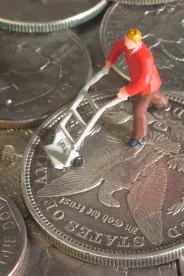We should all promote and adopt sustainability initiatives so that we can feel good about reducing our carbon footprints and slowing the speed of climate change, right? Admirable goals no doubt, but we, and by “we” I mean businesses, exist and function in a competitive marketplace that is driven by the need to improve our balance sheets in order to survive and, hopefully, flourish. Accordingly, while goals of reducing carbon footprints and reducing negative impacts on the environment are laudable, what does it do for the bottom line? A fair and important question given the challenging economic environment in which we continue to find ourselves.
Well, in the area of manufacturing at least, data continues to come in to suggest that the implementation of sustainable practices and technologies can lead to significant cost-savings, and in some cases, revenue generation. In addition, as illustrated below, the magnitude of these bottom-line benefits can be significant.
In 2010, Wisconsin implemented a pilot sustainability program aimed at small- and medium-sized manufacturers with seed money of $1.75 million in the form of a stimulus-funded grant program. 45 Wisconsin based manufacturers are participating in the program, which subsidizes a portion of the costs for the businesses to seek the assistance of experienced consultants to help establish projects to reduce waste and energy use or save on costs related to landfills, logistics and other environmental compliance matters. As recently reported in the Milwaukee Journal-Sentinel, the first year results of the program have been impressive.
Collectively, the 45 companies have invested $3.6 million to develop or implement 87 projects that are projected over five years to result in $26.9 million in cost reductions and $23.5 million in retained or increased sales. According to the first report issued by Wisconsin Manufacturing Extension Partnership (WMEP) which monitors the program, the approximately $54 million in combined cost reduction and sales output resulting from this program represents a 31-1 ROI for the initial state sponsored seed money. These bottom-line results are impressive enough, and when combined with the underlying reductions in environmental impacts listed below, a classic win-win for business and the environment.
-
Electricity: 17.3 million kilowatt hours
-
Carbon dioxide equivalents: 45.6 metric tonnes
-
Transportation: 10.8 million miles
-
Solid waste diverted from landfill: 11,245 tons
-
Air emissions: 83.7 tons
So, given the magnitude of these results, why are more small- and medium-sized manufacturing based businesses not reaping the potential bottom-line benefits of implementing sustainability programs? Based on surveys cited by WMEP, the biggest impediments appear to be the perception that there is no visible link between sustainable practices and profits, lack of time and resources and lack of knowledge. To avoid leaving this much money on the table, not to mention hampering our ability to compete in the marketplace, we all need to do a better job of informing ourselves about the opportunities that exist through sustainable innovation. Why not feel good about saving the planet? - It benefits our balance sheets as well.




 />i
/>i

